Yuri Chervonyi
Gold-medalist Performance in Solving Olympiad Geometry with AlphaGeometry2
Feb 05, 2025Abstract:We present AlphaGeometry2, a significantly improved version of AlphaGeometry introduced in Trinh et al. (2024), which has now surpassed an average gold medalist in solving Olympiad geometry problems. To achieve this, we first extend the original AlphaGeometry language to tackle harder problems involving movements of objects, and problems containing linear equations of angles, ratios, and distances. This, together with other additions, has markedly improved the coverage rate of the AlphaGeometry language on International Math Olympiads (IMO) 2000-2024 geometry problems from 66% to 88%. The search process of AlphaGeometry2 has also been greatly improved through the use of Gemini architecture for better language modeling, and a novel knowledge-sharing mechanism that combines multiple search trees. Together with further enhancements to the symbolic engine and synthetic data generation, we have significantly boosted the overall solving rate of AlphaGeometry2 to 84% for $\textit{all}$ geometry problems over the last 25 years, compared to 54% previously. AlphaGeometry2 was also part of the system that achieved silver-medal standard at IMO 2024 https://dpmd.ai/imo-silver. Last but not least, we report progress towards using AlphaGeometry2 as a part of a fully automated system that reliably solves geometry problems directly from natural language input.
Towards practical reinforcement learning for tokamak magnetic control
Jul 21, 2023



Abstract:Reinforcement learning (RL) has shown promising results for real-time control systems, including the domain of plasma magnetic control. However, there are still significant drawbacks compared to traditional feedback control approaches for magnetic confinement. In this work, we address key drawbacks of the RL method; achieving higher control accuracy for desired plasma properties, reducing the steady-state error, and decreasing the required time to learn new tasks. We build on top of \cite{degrave2022magnetic}, and present algorithmic improvements to the agent architecture and training procedure. We present simulation results that show up to 65\% improvement in shape accuracy, achieve substantial reduction in the long-term bias of the plasma current, and additionally reduce the training time required to learn new tasks by a factor of 3 or more. We present new experiments using the upgraded RL-based controllers on the TCV tokamak, which validate the simulation results achieved, and point the way towards routinely achieving accurate discharges using the RL approach.
Controlling Commercial Cooling Systems Using Reinforcement Learning
Nov 11, 2022Abstract:This paper is a technical overview of DeepMind and Google's recent work on reinforcement learning for controlling commercial cooling systems. Building on expertise that began with cooling Google's data centers more efficiently, we recently conducted live experiments on two real-world facilities in partnership with Trane Technologies, a building management system provider. These live experiments had a variety of challenges in areas such as evaluation, learning from offline data, and constraint satisfaction. Our paper describes these challenges in the hope that awareness of them will benefit future applied RL work. We also describe the way we adapted our RL system to deal with these challenges, resulting in energy savings of approximately 9% and 13% respectively at the two live experiment sites.
Optimizing Industrial HVAC Systems with Hierarchical Reinforcement Learning
Sep 16, 2022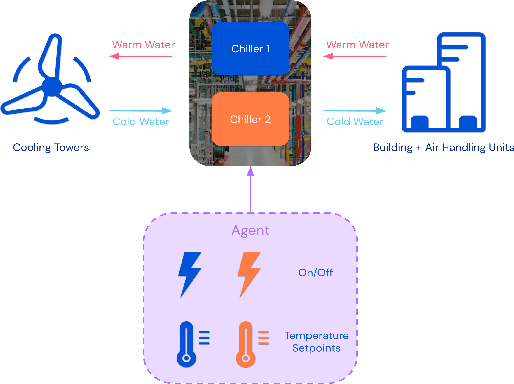
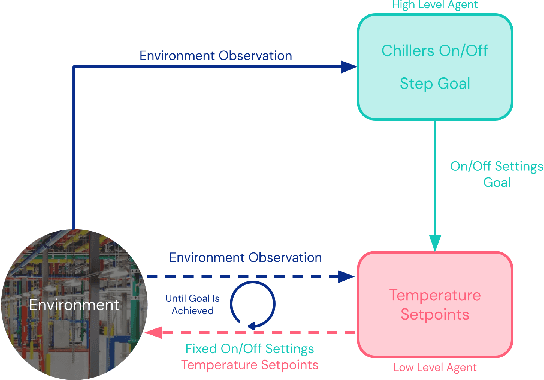
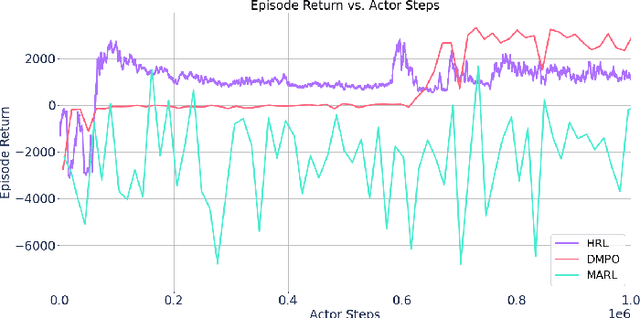
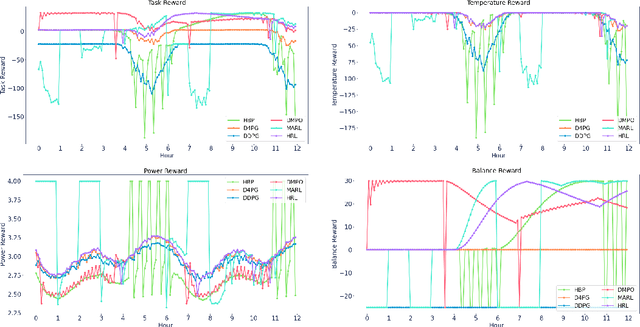
Abstract:Reinforcement learning (RL) techniques have been developed to optimize industrial cooling systems, offering substantial energy savings compared to traditional heuristic policies. A major challenge in industrial control involves learning behaviors that are feasible in the real world due to machinery constraints. For example, certain actions can only be executed every few hours while other actions can be taken more frequently. Without extensive reward engineering and experimentation, an RL agent may not learn realistic operation of machinery. To address this, we use hierarchical reinforcement learning with multiple agents that control subsets of actions according to their operation time scales. Our hierarchical approach achieves energy savings over existing baselines while maintaining constraints such as operating chillers within safe bounds in a simulated HVAC control environment.
Semi-analytical Industrial Cooling System Model for Reinforcement Learning
Jul 26, 2022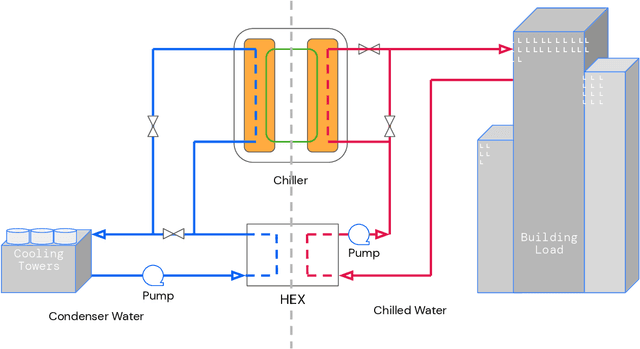

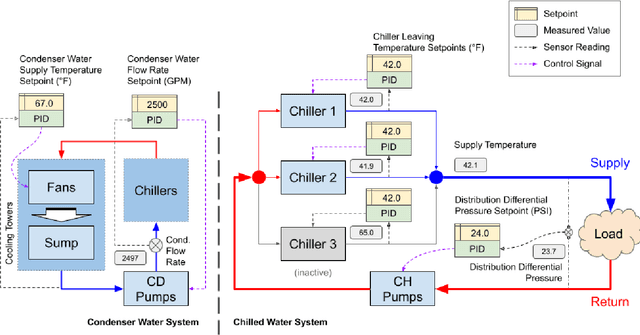
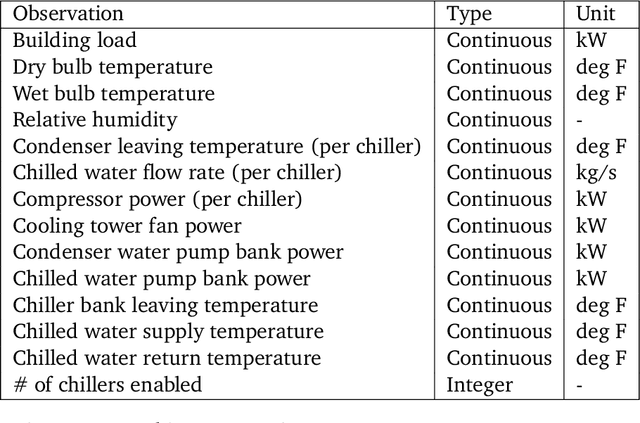
Abstract:We present a hybrid industrial cooling system model that embeds analytical solutions within a multi-physics simulation. This model is designed for reinforcement learning (RL) applications and balances simplicity with simulation fidelity and interpretability. The model's fidelity is evaluated against real world data from a large scale cooling system. This is followed by a case study illustrating how the model can be used for RL research. For this, we develop an industrial task suite that allows specifying different problem settings and levels of complexity, and use it to evaluate the performance of different RL algorithms.
Zap: Making Predictions Based on Online User Behavior
Jul 16, 2018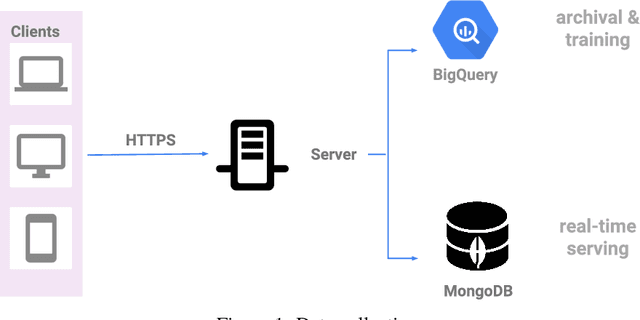
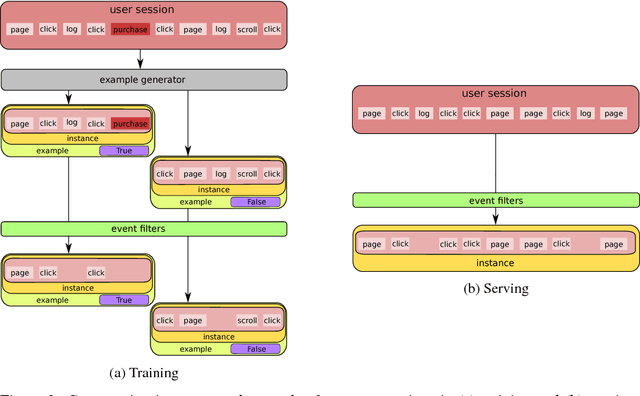
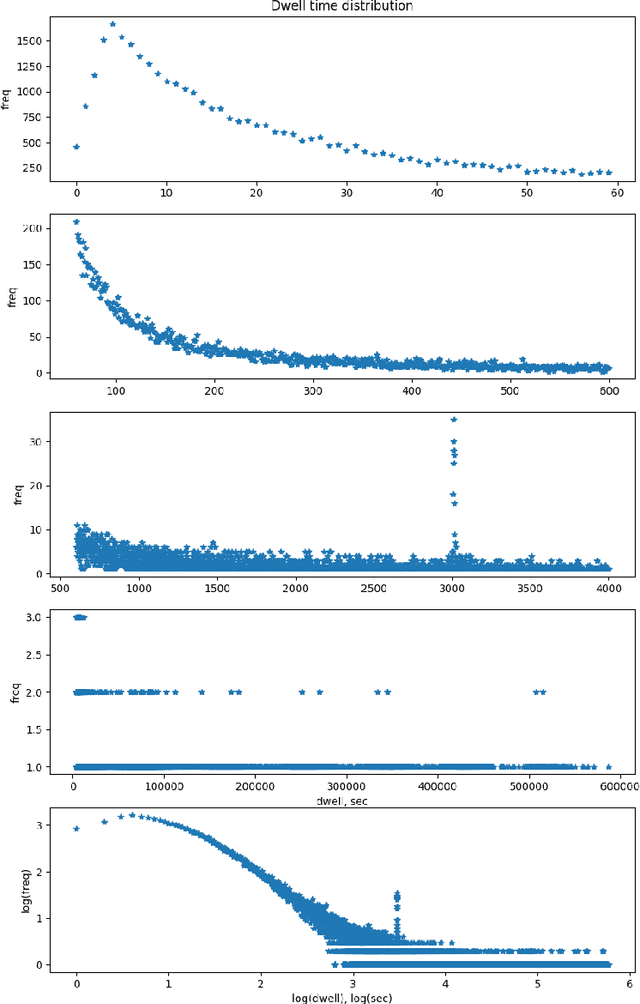
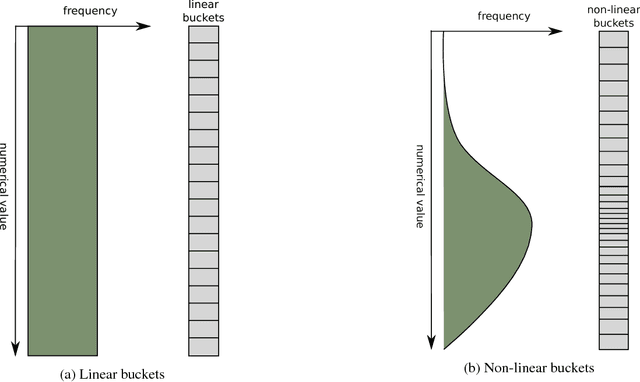
Abstract:This paper introduces Zap, a generic machine learning pipeline for making predictions based on online user behavior. Zap combines well known techniques for processing sequential data with more obscure techniques such as Bloom filters, bucketing, and model calibration into an end-to-end solution. The pipeline creates website- and task-specific models without knowing anything about the structure of the website. It is designed to minimize the amount of website-specific code, which is realized by factoring all website-specific logic into example generators. New example generators can typically be written up in a few lines of code.
 Add to Chrome
Add to Chrome Add to Firefox
Add to Firefox Add to Edge
Add to Edge